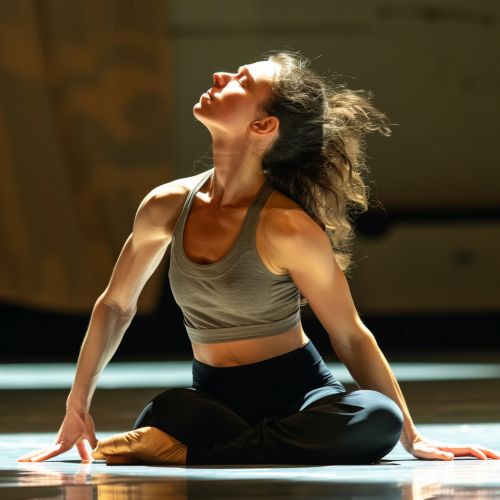Graham technique
Introduction
The Graham technique is a modern dance movement style and pedagogy created by American dancer and choreographer Martha Graham (1894–1991). Graham's innovative approach forever altered the scope of dance by rooting it in the primacy of the human body, its expressivity, and its inherent theatricality.


Historical Context
Martha Graham, the originator of the Graham technique, was born in 1894 in Allegheny, a suburb of Pittsburgh, Pennsylvania. Graham's method evolved over time, reflecting her belief in the continuous flow of life and the cyclical nature of the universe. Her technique is based on the idea that the body can express its inner landscape—its thoughts, emotions, and experiences.
Principles of the Graham Technique
The Graham technique is grounded in the opposition between contraction and release, a concept based on the rhythmic pattern of breathing. It is notable for its unique dramatic and expressive qualities and its use of basic human movements such as walking, running, and jumping.
Contraction and Release
The fundamental movement in the Graham technique is the contraction and release, which stems from the tension between the pelvic and abdominal muscles. The contraction is a powerful, coiling movement that originates from the deepest layer of muscles, creating a visible hollow in the abdomen. The release is the subsequent return to a neutral state, a relaxation or extension of the muscles.
Spiral
The spiral is another key element of the Graham technique. It involves a twisting of the torso around the axis of the spine, creating a sense of tension and release, and is often used to transition between movements.
Fall and Recovery
Fall and recovery is a principle that involves the controlled descent to the floor and the subsequent return to standing. This concept is a metaphor for the human ability to endure life's hardships and to rise again.
Training in the Graham Technique
Training in the Graham technique typically begins with a series of exercises to develop strength and flexibility in the torso, followed by floor work and standing exercises. The class may then move on to more complex sequences and finishes with leaps and turns across the floor.


Impact and Legacy
The Graham technique has had a profound influence on the development of modern dance, both in the United States and internationally. It has been taught in many dance schools and has been incorporated into the repertoire of numerous dance companies.
